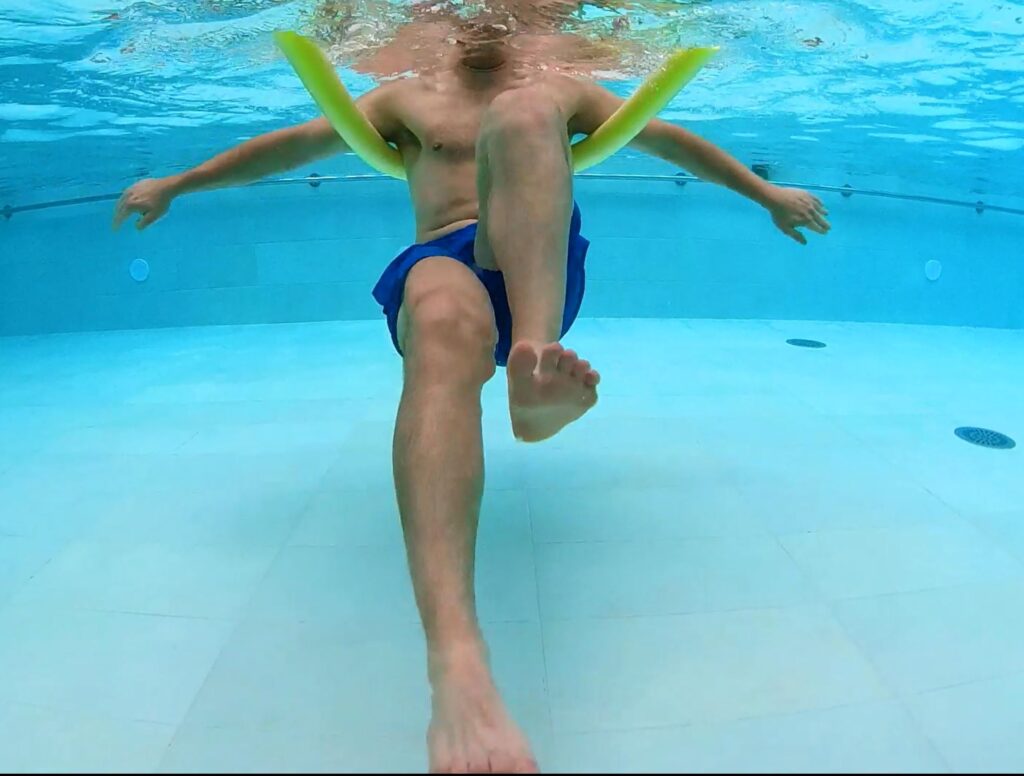What is Deep Water Running (or Aqua Jogging)?
Deep water running (aka aqua jogging) is a form of aquatic exercise which involves running in a swimming pool, often with the aid of a flotation device, such as a belt or vest. As the name suggests, it requires you to have access to a pool that is deep enough for you to run without your feet touching the bottom and with your body submerged in water up to the neck. The various benefits of water make aqua exercise a great form of rehabilitation.
Is deep water running good exercise?
Deep water running (DWR) is ideally suited to fitness, sports conditioning and rehab programmes as it is a non-weight-bearing exercise, unlike running on land, which places pressure on the joints, ligaments and bones. As a result, DWR used in rehabilitation programmes for recovery from stress fractures, torn ligaments and other common injuries.
During DWR, a runner’s heart rate is usually 5 to 15% lower than land-based running (at the same levels of effort) due to water’s hydrostatic pressure. This allows you to increase the intensity of your exercise higher than you would be able to on land, without placing strain on your heart. Equally, hydrostatic pressure moves lactic acid away from the cells, allowing you to exercise harder and longer without getting muscle pain (cramps) or becoming tired due to lack of oxygen in the blood.
As only your head is out of the pool, 90% of your body weight will be carried by the water. This means the movements required for running will be much easier than on land, where the impact of movements place stress on the body. This type of exercise is therefore much more accessible for people with reduced mobility or musculoskeletal conditions than land-based running.
Does aqua jogging build muscle?
When we’re running on land, we don’t feel much air resistance. Running under water, however, strengthens muscles due to the drag resistance water provides, making it much harder to move through the water and working your muscles at a higher intensity. Also, deep water running also works your upper body muscles, unlike land-based running.
Does deep water running burn calories and is it good for weight loss?
DWR has been proven to burn more calories than land-based running for the same amount of effort. Equally, if you are looking to lose weight but have reduced mobility or joint conditions, aqua jogging is an effective way to take part in high intensity exercise without high impact on your body.
What muscle does DWR work?
Two main styles of aqua jogging
- High knees: small fast movements, effort usually goes to hip flexor muscles. The cadence (steps per minute) is faster than land running, but the overall running kinematics (movements) are unique.
- Cross country: more focus on combined hip and knee straightening down followed by a swing back. Lower limb kinematics are much closer to land running, but the overall muscle contractions are unique to aqua jogging.
What are the benefits of deep water running?
Deep water running is proven to:
- Increase cardiovascular fitness in untrained individuals
- Maintain cardiovascular fitness in highly trained individuals
There is no evidence that aqua jogging affects other measures of performance, and running in water alone will not directly carry over to running on a track. However, although running in water does not directly replicate land-based running, it is proven to have positive effects on land-based aerobic fitness.
How to do Deep Water Running effectively
Although the focus of each training programme should depend on its desired outcome, here are some general tips on how to do deep water running effectively.
- Long constant training should only be used for recovery training
- Use of High Intensity Interval Training (HIIT) is important to gain optimal aerobic improvements
Short intensive sessions are recommended:
- A DWR training set in water is generally slightly longer and the rest shorter compared to land training. This is because it takes longer to reach an aerobic training zone during aquatic exercise and the heart rate drops much quicker and lower during rest. Using longer sets ensures that sufficient time in the training zone occurs, and short rest prevents the heart rate from dropping too low, which makes it even harder to increase to the desired training zone. Plus, due to lack of impacts, a short recovery is sufficient, so short intensive sessions are recommended.

